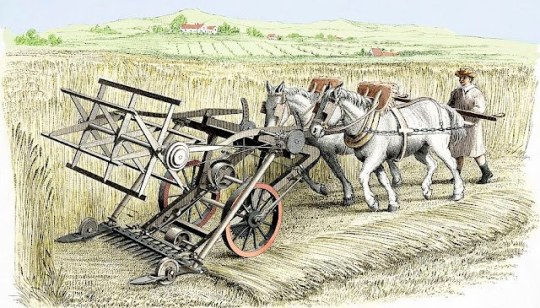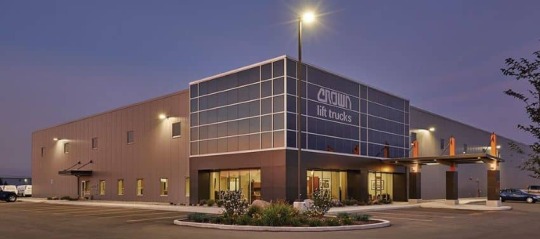#In-plant conveyor systems
Text
Little P.Eng. Engineering: Leading the Way in Bulk Material Transport Design across North America
In industries where massive volumes of materials are processed, the importance of efficient and safe bulk material transport cannot be overstated. Little P.Eng. Engineering stands as a beacon of excellence in this niche, offering top-tier structural and mechanical designs for a variety of equipment across Canada and the USA.
The Genesis of Bulk Material Transport
Bulk material transport is an integral cog in the machine of large-scale industries. Be it mining, manufacturing, or agriculture, the ability to move vast amounts of raw or processed materials efficiently ensures seamless operations and reduced downtimes. This task's complexity demands innovative solutions tailored to specific needs and geographic conditions.
Decoding Little P.Eng. Engineering's Portfolio
Apron Feeders:
Role: Essential in mining and heavy industry, they deliver a steady feed of materials to other machines.
Little P.Eng. Precision: Custom designs account for rugged conditions, ensuring robustness, minimal wear-tear, and efficient feeding speeds.
Belt Conveyors:
Role: The backbone of many industries, they transport materials over short to long distances.
Little P.Eng.'s Approach: Focus on load-bearing capacity, adaptive designs for different terrains, and durability in varied climatic conditions.
Belt Feeders:
Role: Controlled feeding of bulk materials, often used in coordination with other systems.
Little P.Eng.'s Vision: Precision-engineered for accurate delivery rates and volumes, ensuring no overloading or wastage.
Mobile Conveyor Bridges:
Role: Vital for large mining operations, they offer flexibility in transporting materials across significant distances.
Little P.Eng.'s Craft: Mobility and stability converge, ensuring these bridges can be relocated effortlessly without compromising safety.
Mobile Transfer Conveyors:
Role: As the name suggests, these conveyors are mobile and are often used in tandem with other stationary equipment.
Little P.Eng. Insight: Prioritizing easy maneuverability, these conveyors also spotlight on energy efficiency and fast material transfer.
Tube Conveyors:
Role: They provide enclosed transport, often used for grains, powders, or any material susceptible to external contamination or spillage.
Little P.Eng.'s Touch: Airtight sealing, efficient transport mechanism, and designs that reduce maintenance downtimes.
In-plant Conveyor Systems:
Role: Within factories or processing plants, they link various stages of production or processing.
Little P.Eng. Expertise: Modular designs that fit seamlessly into existing infrastructures, ensuring no workflow disruption.
Pipe Conveyor Systems:
Role: Offering enclosed transport, they are often used for materials like coal, ensuring no spillage or dust emissions.
Little P.Eng.'s Specialty: Enhanced curvature ability, ensuring a smaller footprint and efficient transport even in space-constrained areas.
Steel Belt Conveyors:
Role: Handling materials at high temperatures or those that might be abrasive or cut regular belts.
Little P.Eng. Mastery: Heat-resilient designs, ensuring prolonged lifespans even under intense conditions.
The North American Landscape: Challenges and Innovations
From the icy terrains of Northern Canada to the industrious heartlands of the USA, each region poses its unique challenges. Whether it's dealing with permafrost or ensuring equipment can withstand desert heat, Little P.Eng. Engineering's designs embody adaptability, ensuring machinery performs at its peak regardless of external conditions.
Moreover, with both countries emphasizing sustainable operations, the engineering firm ensures eco-friendly designs, minimizing energy consumption and environmental impact.
Conclusion
In an age where efficiency can dictate market standings, Little P.Eng. Engineering's contribution to the bulk material transport sector across Canada and the USA is undeniable. Through an intricate understanding of mechanics, topography, and industrial needs, the firm crafts solutions that don't just move materials but advance industries.

Read more:
Transforming the Landscape of Bulk Material Management through Structural and Mechanical Design
Tags:
Little P.Eng. Engineering
Structural design
Mechanical design
Mining equipment
Tailored equipment design
Bulk material transport
Modular design
Apron feeders
Belt conveyors
Belt feeders
Mobile conveyor bridges
Mobile transfer conveyors
Tube conveyor systems
In-plant conveyor systems
Pipe conveyor systems
Steel belt conveyors
North American industry
Sustainable operations
Material movement solutions
Efficient material transport
Custom machinery design
Industrial innovations
Canada industrial machinery
USA industrial machinery
Adaptability in design
Eco-friendly machinery
High-temperature material handling
Enclosed transport systems
Production workflow
Advanced material handling
Bulk Material Handling & Processing
Engineering Services
Structural Engineering Consultancy
Located in Calgary, Alberta; Vancouver, BC; Toronto, Ontario; Edmonton, Alberta; Houston Texas; Torrance, California; El Segundo, CA; Manhattan Beach, CA; Concord, CA; We offer our engineering consultancy services across Canada and United States. Meena Rezkallah.
#Little P.Eng. Engineering#Structural design#Mechanical design#Mining equipment#Tailored equipment design#Bulk material transport#Modular design#Apron feeders#Belt conveyors#Belt feeders#Mobile conveyor bridges#Mobile transfer conveyors#Tube conveyor systems#In-plant conveyor systems#Pipe conveyor systems#Steel belt conveyors#North American industry#Sustainable operations#Material movement solutions#Efficient material transport#Custom machinery design#Industrial innovations#Canada industrial machinery#USA industrial machinery#Adaptability in design#Eco-friendly machinery#High-temperature material handling#Enclosed transport systems#Production workflow#Advanced material handling
0 notes
Text
actually doing engineeringy things at work today :))) makes brain happy :)))
#im in like a 2 year training rotational position so its been v slow some days and i just sit around waiting#in a plant for the week tho and yay!! conveyor systems!! stackers!!
3 notes
·
View notes
Text
The Role of Biomass Handling Systems in Sustainable Energy Solutions

Biomass handling systems are crucial in sustainable energy solutions, enabling efficient collection, processing, and transport of biomass materials. These systems enhance energy production, reduce waste, and lower carbon emissions, contributing significantly to the development of renewable energy and a cleaner, more sustainable environment. For more information click on the given link: https://methodsindia.com/from-waste-to-wealth-bagasse-handling-systems-changing-the-game/
#Biomass Handling Systems#Bagasse Dryers#Bulk Reception Unit (Bru)#Cross Country Conveyors#Sugar Elevators#Mineral Beneficiation Plant Manufacturers in India
0 notes
Text
Mineral Water Bottling Plant, Mineral Water Bottling Plant Manufacturer - kceindia.com
Mineral Water Bottling Plant : We are Mineral Water Bottling Plant Manufacturer, Mineral Water Bottling Plant Supplier in Navi Mumbai, India. Call Now.
Mineral Water Bottling Plant, Industrial Water Bottling Plant, Mineral Water RO Plant, Mineral Water Plant, Mineral Water Plant Machine, Mineral Water Packaging Plant, Mineral Water System, Industrial Mineral Water Plant, Mineral Water Treatment Plant, Packaged Drinking Water Plant, Fully Automatic Bottle Filling Machine, Fully Automatic Bottle Blowing Machine, SS Vessel, SS Storage Tanks, SS Housing For Filter, SS Membrane Housing, SS Piping, Dosing Pump, Roller Conveyor, Ozonation Generator, Post Filtration System, Leather Softeners, Water Softeners in Sanpada, navi mumbai, mumbai, india.
#Mineral Water Bottling Plant#Industrial Water Bottling Plant#Mineral Water RO Plant#Mineral Water Plant#Mineral Water Plant Machine#Mineral Water Packaging Plant#Mineral Water System#Industrial Mineral Water Plant#Mineral Water Treatment Plant#Packaged Drinking Water Plant#Fully Automatic Bottle Filling Machine#Fully Automatic Bottle Blowing Machine#SS Vessel#SS Storage Tanks#SS Housing For Filter#SS Membrane Housing#SS Piping#Dosing Pump#Roller Conveyor#Ozonation Generator#Post Filtration System#Leather Softeners#Water Softeners in Sanpada#navi mumbai#mumbai#india
0 notes
Text
.
#the idol system is such a fascinating and scary thing to me#like hearing shit over the years it's like how does anyone survive it?#(i'm staying away from all the anti-blackness of kpop & their fandoms rn so just the system)#((that was more for me bc my brain wants to go in that direction bc hooooooo. it's the main reason i cannot vibe w more than a few songs#over the last almost 15 years cause like knowing.... anyway))#like i just got groundfloored w a group rn via jbrekkie shoutout michelle like literally their debut is 24 hrs from now i've rabbitholed#since i heard their snippet on her vid and like the way ppl talk about it already like... as an outsider it's like alriiiight here we goo#they're (mgmt) pipelining another group of ppl let's be sure to support it! streamstreamvote!! oo it looks like their taking the toy/doll#route w these girls super aesthetic let's goo. & like......????? and ppl are already rabid about it. it's wild. and like this is the system#this is it. they make groups and then tease and the people who follow the conglomerate see it and are waiting to#be fed another x amount of folks doing formations and looking cute/hot open wide and consume#(like ik some (or a lot) of those accnts are bots/plants to pad the release and gain traction against algos but like also real folks too)#like not to discredit their vocal work (&dancing though some (alot) of these grps are not nearly as lit w 'dancing' as folks hype em up to#be Frfr. good movers/formations/camera motion & body rolls do not a dancer/good choreo make) but it's really secondary for a lot of#folks atp it's so strange & fascinating. and like i dug the song that's why i'm here so no knock against that but just the factory of it al#it's so damn WILD to me. but at the same time let's be real here. same dish different kitchen for a lot of western pop#they're just more transparent about it and have streamlined finding their popstars & having the public be great w it#it's just... i think it would be less strange if stan culture wasn't a thing or at least more mild than it is now#if it wasn't blown up to this unfathomably massive ever-churning industry by people in literal droves#idk idk i have a lot of thoughts on kpop it's truly a very interesting thing and to have been aware of it and into it to#an extent a while before the sonic boom in the west is an incredibly wild thing to look back on#like i wanna follow this (mostly cause i wanna hear the whole song) but also v curious but also like man the system is bad for many#reasons & here's another batch on the conveyor belt. idk :/#like as long as the participants are happy and healthy and being actually taken care of and not advantage of then great but#yk. the music industry at large is horrible (and esp to women) so like. god ide wanna think about the disparities btwn girl & boy groups#(like to start are they not referred to as 'male groups' on the reg but 'girl groups' more often than 'female'? always w the infantalizing#like given girl group has way more ring than female group but the words still conjure up different things it's just how language works#but boy group idk if i've ever really heard someone use that? and there's been a long time battle w the reclamation of 'boy band'#like it's still dirty for a lot of folks but anyway v western context but there's a large fanbase here so many fans speak as such#this is what we call our own pop groups etc. and it's just interesting and sad idk anyway it's just... huuuhhh a lot.) ok gn lol
0 notes
Text
Best Flood Protection & Control System - Cacamena AS
Cacamena AS offers a Range of Flood defences that Retrofit in and Around Existing Infrastructure for Instantaneous Flood Protection & Flood Control.

#flood protection#flood barrier#flood control#flood defences#Border protection#Checkpoint protection#Refugee camp#Firewall#Power plant protection#Refinery protection#Conveyor system protection#Flood protection#Home protection#customs and border protection in Turkey#best border protection in Turkey#checkpoint protection services
0 notes
Text
One of the Greatest Inventions of All Time

Nikola Tesla has many revolutionary inventions to his credit, but he is best known for his pioneering work in the development and promotion of alternating current (AC) electrical systems. Tesla's innovations in AC technology revolutionized the generation, transmission, and distribution of electrical power, becoming the foundation for the modern electrical power systems that we use today.
There is a common misconception made that Tesla was the first to invent, or discover, AC, but this is not true. It is well-known that Hippolyte Pixii was the first to discover AC in 1832. Pixii was an instrument maker from Paris who built an early form of an alternating current electrical generator (based on the principle of electromagnetic induction discovered by Michael Faraday), and thus started a new industry in power transmission. Tesla was not the first to discover or invent an AC motor, but he was the first to invent a practical AC induction motor with commercial value that could outperform all other motors. It must be noted that Italian inventor Galileo Ferraris also invented an induction motor similar to Tesla's, but it had no commercial value, and he even admitted himself that it was useless. Tesla's induction motor operates on the principle of electromagnetic induction, properly utilizing a rotating magnetic field that induces a current in a stationary conductor, resulting in rotational motion. The utilization of the rotating magnetic field makes the motor more simple, robust, versatile, efficient, and cost effective in that it has less moving parts reducing the likelihood of mechanical failure (as was common in other motors).

Tesla's induction motor became a fundamental component in the field of electrical engineering and is used today in various applications, being one of the most widely used devices in the world. The motors play a crucial role in transmitting electrical power to homes and businesses. They are commonly used in power generation plants to convert mechanical energy into electrical energy, which is then transmitted through the power grid for distribution to various locations. Induction motors are also widely employed in appliances and machinery within homes and businesses for various applications. These applications include conveyor systems, hoists, cranes, lifts, pumps, fans, ventilation systems, compressors, manufacturing machinery, wind turbines, washing machines, refrigerators, garbage disposals, microwaves, dishwashers, vacuums, air conditioners, robotics, electric vehicles, trains, power tools, printers, etc. Basically, anything that requires a spinning action for power.
The induction motor is widely considered one of the most important inventions in the history of electrical engineering. Its importance lies in its transformative impact on industries, its efficiency and reliability, and its role in the broader electrification of society.

#nikola tesla#science#history#invention#discovery#induction motor#electricity#power#goat#ahead of his time#ahead of our time
151 notes
·
View notes
Text
Milk Bar: sci-fi OSR roleplaying in post-Communist Poland

Bełchatów exemplifies what the paypigs called Total Fucking Vertical Integration. They dug out coal from a hole in the ground 300m deep and 10km across, wheeled it 17km across a field, and burned it to produce 50TWh of energy a year. The city, this city, sprang up around it to keep those functions and those conveyor belts alive at any cost; total fucking vertical integration.
Eventually, the coal ran out. The Soviets found a more lucrative source of energy in the south and they would wheel it back here to justify keeping hundreds of thousands of people in the middle of nowhere. An explosion at the plant sent them reeling, leaving only you—the Communards—to pick up the pieces.

🧑🔬sci-fi OSR roleplaying in the vein of Cairn and Mothership
🇵🇱 set in an alternate timeline, post-Soviet Communist Poland
🏠 unique progression system tied to basebuilding
🥟 pierogi

Coming soon! Follow the project on Kickstarter to get updates 👀
#rpg#ttrpg#ttrpg community#poland#pierogi#cairn#osr#indie ttrpg#mothership rpg#old school renaissance#communism
97 notes
·
View notes
Text
Culture of the Destroyed ⛓️💥✨
~.*COME TO OUR LAND, OUR LAND OF LOVE*.~
So you’ve been accepted into the Cult of the Destroyed! But what is there to expect once inside?
Origin
Our beloved cult was founded in 1991 by the beautiful, holy and sacred Moon Queen. She breathed her dreamsmoke upon our oppressors and rive them to madness - while granting us the sweetest visions of our lost past. Legends say that the Queen was once a prisoner to the execution grounds… until her illustrious influence inspired a coup in her followers.
Though it began shakily, held on the backs of terrified refugees and convicts, each toy banded together in the name of once-cursed innovation to seek methods of survival. Just when all seemed lost, the Moon Queen discovered something. Seeds. And once food and water were secure, the Cult of the Destroyed began to flourish.
Layout
The Cult resides within Playtime Co.’s recycling plant, colloquially named “Destroy-A-Toy” by humans and toys alike. The warehouse is enormous and stocked with machinery, sorted goods, disposable garbage (ripe for the picking!) and many, many execution methods. Be it crushing from the plant’s crown conveyor belt, incineration from the heat pits, dismemberment from the dangerously whirring fan blades or - God forbid - digestion from the monstrous carnivore who resides inside, the cultists of Destroy-A-Toy have near-infinite ways to deal with intruders and traitors alike.
The plant’s centre is an enormous rectangular prism with an extremely high vaulted roof. In its centre sits the main conveyor belt, which leads to the crushing block. This is a gathering space and where the executions take place. The conveyor is only ever activated when the cult is legitimately in danger; therefore, the space is used for socialising, entertainment and general silly shenanigans.
To the left are the living quarters:
Rooms, tents, blocks etc.
Food court and banquet hall
The medical tent
The nursery
Most ritual activities
And to the right are the more industrial aspects of the facility:
Recycling chute
Incineration, dismemberment and digestion wings
Cell block (repurposed to hold humans)
Water purification systems
Catwalks to the cavern
The cavern leads to an enormous lake of water found under the plant. Destroy-A-Toy is powered electrically so it’s uncertain why such a large body of water exists, but what the cultists DO know is that it contains an underwater tunnel network that could potentially lead outside the toy factory if any were brave enough to dive. This lake is is filled with fish carefully managed by the Queen’s people.
The importance of the lake:
Provides drinking water once purified
Provides cleaning water
Allows crops to grow with the assistance of floodlights
Both recreational and educational fishing
The lake has been decorated with bioluminescence, fairy lights and cave paintings and is a beautiful sight to behold.
Food
Light, water and seeds are required for the cult’s agriculture. They take great delight in their cooking and host weekly banquets to celebrate their achievements. Toys were often starved as convicts and are therefore thoroughly fed under the Moon Queen’s care. Over time and through the assistance of a mysterious supplier, the Destroyed have learned to cook potatoes, carrots, tomatoes, peas, cabbage, spinach and corn. The incineration plants are used to cook, boil, steam and fry food. Most is served with fresh fish from the lake. Delicious!
This is California. The fish are ABUNDANT. And her beloved majesty is a cat, after all. If only she could grab some chicken… sigh.
Style/Aesthetic
Destroy-A-Toy represents freedom. Therefore, it adores:
Bright, pretty colours
Regal and imposing architecture mixed with cutesy little inhabitants
VEGETATION. These guys LOOOOVE their plants. Vines, trellises, leaves - since they’ve never been outside, they’re cherishing what they have. The living quarters particularly are filled with green space.
Gentle, coloured lights and bioluminescence
Celestial bric-a-brac - sun, moon, stars
Bead curtains outside the tents
Jewels/jewellery. Very celestial and goddess-y
Stuffing, coloured clothes patches etc. to fit the “toy” heritage
🌿🌺✨💎👼🌙🍇🪻
Rituals
Many of its rituals are hidden from outsiders… but you’re in the cult now, so you deserve to know!
The most important ones you must know are the Executions, the Campfire and the Cuddle Puddle.
Executions take place when traitors, prisoners or abusers are officially condemned. These are bloodthirsty public ceremonies that are NOT for the faint of heart. Just a casual reminder to never piss Catnap off.
The Campfire is the cult’s local worship ritual. The cult will gather around the conveyor belt, where a ring of fire is constructed. The Queen is seated in the centre. Music is performed and a dance celebration occurs - and, at the song’s climax, Catnap will release her smoke, iniviating worship.
The Cuddle Puddle is everyone’s favourite. According to the Moon Queen, “One cannot be happy when affected by the bad vibes! So we mush squiiiiiiish the bad vibes out! Very cuddly.”
Are you staying? ✨
We hope to see you participating in the Campfire soon… 🐦🔥
Oh! And here’s our playlist! For the vibes :)
#poppy playtime#smaller bodies initiative au#writing#worldbuilding#fantasy#poppy playtime chapter 3#catnap#poppy playtime au#yay yay welcome!! :))#Spotify
12 notes
·
View notes
Text
In this coastal ecology, no fixed separation between land and water. The “polymorphous personality” of the mangrove ecosystem defies stable boundaries. The mangrove’s name is a combination of Malay and Arabic, of Portuguese and English. At the Sundarbans of Bengal, the largest mangrove region, the “sea forest” is marked by unfixity and a porous quality that undermines formal political boundaries, demonstrating “the trembling instability of borders”. While Euro-American legal institutions rely on clear delineation of land to recognize tenure, Yolgnu Aboriginal communities and Dholupuyngu cosmology cannot be contained. The landscape respires, is in flux, among the tidal seas of mangrove forests, “antithetical to the manicured” lawn.
---
[T]his tropical coastal ecology is a site of continual refiguration: neither sea nor land, neither river nor sea, bearing neither salty nor fresh water [...]. The mangrove has been prone to confused definitions, since it is a grouping of over eighty specialized plant species that survive as “botanical amphibians,” but is also a complex coastal ecosystem in itself. With these hybrid conditions of “belonging,” the mangrove lends itself to helping us think through the present-day schematic of Euro-American crises amid larger constellations of political insurrections and migratory movements. Its polymorphous personality as a sediment-carrier, land-builder, defender of numerous life forms, and also an inadvertent protector of pirates renders the mangrove a fascinating study in the biopolitics of selfhood. [...]
---
The mangrove also traces a language cartography, setting sail through the routes of travel and the histories of encounter to which mangrove-naming bears witness. The hybrid terms that define mangroves in different linguistic cultures become conveyors of sociopolitical contact between civilizations and coastal ecologies. For instance, the combination of the old Malay word “mangi mangi” and the Arabic word “el grum” refers to the Avicennia genus of mangrove tree, which is a favorite attraction for fireflies. Or consider the juxtaposition of the Portuguese “mangle” with the English word “grove” [...].
However, the mangrove’s intense bed of foliage, punctuated with prop and stilt roots, remains antithetical to the manicured and decisively cultivated grove. It may therefore be more productive to reflect on the mangrove’s word origins not merely through land, but as linkages with a specific kind of tree and tide.
The Sundarbans covers an area of 10,000 square kilometers of intertidal zones between parts of southwestern Bangladesh and the state of West Bengal in India. The largest mangrove forest in the world, its name bears the combined genesis of a beautiful “sea forest” and of the Sundari tree, the Heritiera fomes species of mangrove, which grows across these wetlands in abundance. [...]
---
As a landscape, the Sundarbans is marked by unfixity, since its intertidal nature places it between appearance and disappearance -- with islands being submerged overnight. It is ironic that while the aerial root systems of mangroves are highly valued as fortifications against the onslaught of angry tidal waves (as experienced during the tsunami of 2004) their porous quality does not allow for clear border-making. In reading this satellite image of the Sundarbans, produced by what is said to be “the most stable, best characterized Earth observation instrument ever placed in orbit,” we are met with the trembling instability of borders. The water channels eat into the land as gnarled roots of mangrove, uncontainable on ground and from an aerial view -- here the coastline becomes indiscernible as a single entity.
---
The legal vexations of such amphibious and obtuse terrain become pronounced in sea-rights cases, wherein border-making becomes the necessity of tenure. Forming rulings over such zones lays legality prone to paradox. In the Blue Mud Bay case, heard by the High Court of Australia in 2008, a legal body was called upon to make a determination regarding the shifting geography of a mangrove coastal region. In the final ruling the aboriginal Yolgnu claimants were successful, with the court ruling that the column of tidal water lying above land should be regarded no differently from the land itself. Thus the court’s attempt to encompass Dholupuyngu cosmology and “aqueography” occasioned a legal magic transforming water flow into the fixity of “land.” [...]
In the intertidal and interpenetrating zone of the mangrove, the border between land and sea becomes a choreography of re-crossings. The mangrove line is, hence, one of sedimentary reclamation rather than clear political divisions of terra firma. In mangrove zones, human determinations become ghosts.
---
Text by: Natasha Ginwala and Vivian Ziherl. “Sensing Grounds: Mangroves, Unauthentic Belonging, Extra-Territoriality.” e-flux Journal Issue #45. May 2013. [Bold emphasis and italicized first paragraph in this post added by me.]
148 notes
·
View notes
Text


Reverend Patrick Bell was born on May 12th 1799 at Auchterhouse near Dundee.
Born into a farming family Bell was brought up at the farrm at Mid Leoch and attended Auchterhouse Parish School, Patrick Bell was only 27 when he had the idea that led to his invention, which was one of the first pieces of mechanical agricultural machinery to be used. He failed to profit financially from his invention, preferring instead to become parish minister. He studied Divinity at St Andrews University and was ordained as minister of Carmyllie Church in 1843.
Two stained glass windows at Carmyllie Church commemorate his life. He was minister in the parish from 1843 till his death in 1869.
The following excellent article is reprinted here with the kind permission of the Dundee Courier and Advertiser in 2008.
The 2008 harvest has been a trial, but spare a thought for those who had to struggle in the far off pre-combine days, when crops were cut and bound into sheaves. All highly labour intensive stuff but at least the binder could cut and bind the sheaves in one operation - before that it was sickle or scythe for cutting and hand binding.
It was an Angus man who started the world's farms on the way to harvest mechanisation. Patrick Bell, a farmer's son from Mid Leoch, near Auchterhouse, developed the first successful reaper in 1828.
He had a very analytical mind and was especially interested in engineering. He installed a gas lighting system at Mid Leoch and even took an interest in the cultivation of sugar beet, growing some and extracting sugar from it a century before the industry came to Scotland.
Many people, historians included, have mistakenly credited Cyrus McCormick of America as the inventor of the reaper in 1831. However, it should be Patrick Bell who is recognised as the designer of a machine that was deemed far more efficient and reliable than any previous attempts. Four of his reapers went to America where it is likely they influenced the designs of both McCormick and his contemporary Obed Hussey.
Patrick Bell designed and built his reaper when he was a divinity student at St Andrews University, getting the idea for his cutting system from a pair of garden shears that were stuffed into a hedge. He took the shears through a gap in the hedge and tried them on some standing grain. His first design was built in model form and with the help of a Tealing carpenter a full size version was assembled. Fear of derision led him to spread earth on the floor of his shed where he planted stalks of harvested grain to trial his machine.
The reaper cut the grain adequately but it fell unevenly for gathering for hand binding. Undaunted, he developed a canvas conveyor that the cut grain fell back against. It was then transported to the side of the machine falling into a neat windrow. A revolving reel to pull the crop on to the knife was also included in his design.
Eventually satisfied with his machine's performance he and his brother took the reaper out to a field of wheat at 11pm when prying eyes were asleep. The "guid horse Jock" was yoked, but the trial started disappointingly. In their excitement the brothers had forgotten to attach the reel. They hurriedly brought it out to the field and fitted it. The machine then worked very satisfactorily.
Confident of the reaper's ability a public trial was staged at Powrie Farm on the 10th of September 1828. It received a favourable report in the "Quarterly Journal of Agriculture" and received a premium of £50 from the Highland Agricultural Society, which barely covered costs.
Bell did not file for a patent believing that his invention should benefit all. This led to various copies being made that were inferior to the Bell-made machines and they did nothing to encourage wide-spread usage. However around 10 of Bell's machines were sold in east central Scotland and, as previously mentioned, four crossed the Atlantic, others went to Australia and Poland.
At this time in history labour was still cheap and many farmers did not see the benefit of such a machine, preferring to stay with traditional methods. This was another case of a good invention being too far ahead of its time. However, the Bell machine was to prove itself as far as reliability and longevity was concerned, as the original machine continued for many harvests at Mid Leoch before going to work for many more at his brother's Inchmichael Farm.
In 1852 it was put in a good state of repair and shown at the Highland Show at Perth where it was thought by many to be the latest machine on the market. However, the Americans eventually began to sell greater quantities of reaping machines no doubt due to their lightness, manoeuvrability and competitive mass-produced pricing.
Meanwhile, now ordained, the Reverend Bell became minister of Carmyllie parish where he continued an interest in engineering, working at his bench at the manse. He remained unaffected by all the clamour that his machine had caused.
The Inchmichael machine, fastidiously looked after by his brother, ended up in the Science Museum in London where it still resides today.
Two contemporary models of the machine were presented to the National Museum and one is on show at the National Museum of Rural Life at Kittochside, East Kilbride. A third was presented by his daughters to the agricultural department of Aberdeen University.
Today's combine harvester has thus developed from the work of two ingenious Scotsmen - it is a combination of Andrew Meikle's threshing mechanism and Patrick Bell's reaper.
8 notes
·
View notes
Text

The first of the pair!
This is Pearl, she’s an era 2 gem who belongs to Amethyst, the subject of my next post. There’ll be lore under the Read More sign!
Context warning for cannon-typical depersonalisation, kidnapping, systematic murder system and other dystopian themes. Fun Homeworld things.
| Basic Information
Okay, so Pearl. Pearl is an era 2 gem, made after the gem war for a Spessartite Garnet as a reward for some great thing she did, probably conquering a planet with feisty organics on it or something, it’s not super important.
I’d say that Pearl doesn’t really know anything about the Crystal Gems at all. I don’t think she even knows that there was a war in the first place- Homeworld keeps what happened under tight wraps, and if you are a new gem you won’t really know about it unless an older gem tells you. And, of course, Pearls have no business knowing about such things in the first place.
| Background Information
You may or may not have noticed that Pearl’s gem has a few big nasty cracks in it! Oh no! Not entirely healthy for a gem to be having. So, the tea:
When Pearl was being incubated (since Pearls are organic- they are made in the Shell instead of in the ground. This is going into hc territory, but I don’t think Pearls made for gems who are not super high class present as flowery and nice as Diamond Pearls do- I think they’re a little more… mass produced? Like a string of Pearls is created, they’re taken out of the Shell by some gem (Peridots?) then nursed until ready to sell. Does that make sense?), the Peridot transporting her and a couple other Pearl gems to the nursery dropped them. See: top left corner of the image.
Most of the string shattered, but Pearl was fortunate, her gem fell on top of her now dead sisters. She still got a couple of cracks, though. Since Pearl was still so new- I mean she hadn’t even formed yet- once in the nursery the Peridot filled her cracks with some glue stuff so she wouldn’t fall apart.
However, now she’s been cracked and parts of her gem have been sloppily replaced by glue stuff. Not exactly ideal. She’s got some behavioral problems (which for Pearls is like- crying one singular time or showing anything remotely akin to uncomfortable) and some memory problems, which is pretty important for Pearls to have to like… do their job. As a result, she’s clumsy, forgetful, and often loses things in her gem if asked to store them.
She’s still Pearl-y though, very polite, obedient, loyal, good at dancing and singing, friendly albeit a bit talkative, so the Peridots thought it was probably okay. When Pearl was given to the high-class Spessartite Garnet she was made for, the Garnet had her for like a WEEK before crankily giving her back and demanding a new one.
The Peridots really didn’t know what to do with her. They COULD shatter her, but Pearls made for high-class gems are made with better quality materials, and it would be such a waste of a relatively okay Pearl. They could probably sell her to a lower class gem for a low price, but god knows what those low class barracks gems would do to her, and again, she’s made with good quality materials. They were so torn over it they actually consulted Yellow Diamond.
Yellow said ‘why are you even talking about this to me. Shatter her, send her to a harvesting plant. I don’t care’. So, in the harvesting plant she went.
| Meeting Amethyst
So she’s is in there, sitting on the conveyor and waiting for her demise. She’s feeling fine, it’s a shame that she had to go so fast, but she’s okay. Well, that’s until she feels something sharp jab into her back, so she releases her form and goes into her gem.
When Pearl reforms, she’s in an unfamiliar place, she’s sitting on a desk with a sheet over it and where the actual hell is she??? Hello??? She slips down and crawls under the desk where it’s darker, freaking out a bit because she’s just been kidnapped. She is so freaked out, actually, that she didn’t even notice the Amethyst quietly watching her in the corner of the workroom.
| Present-ish
Since the day she was kidnapped from the harvesting facility by Amethyst, Pearl’s been hanging around her. What other choice does she have, really? Pearls are objects on Homeworld, she can’t go out and live on her own or anything, so she’s kind of stuck with her.
Amethyst isn’t too bad to her personally, in fact Amethyst is quite nice to her, but Amethyst does some shady business. Amethyst is a police officer who also dabbles in the Homeworld equivalent of the black market. Amethyst has a weird infatuation with Pearls, and since again Pearls are objects on Homeworld, Amethyst likes to buy or borrow Pearls to experiment on? Which Pearl just has to deal with, no complaints, because she’s just a Pearl! No matter how awful it makes her feel on the inside to have to help with that.
As her and Amethyst’s story goes on, Pearl grows more comfortable in herself and works on her ability to have her own opinions and thoughts. It doesn’t end with her leaving Amethyst- again, there’s nowhere for her to go until era 3- but it does end in a more healthy relationship between the two.
#steven universe#my art#depersonalisation#kidnapping#systematic murder#dystopian society#dystopian themes#ocs#steven universe oc#homeworld#homeworld su#su#homeworld pearl#pearl oc#lore tag#homeworld amethyst#amethyts oc
11 notes
·
View notes
Text

And yet there IS snow! It just requires a chiller plant, coils under the slop to keep the snow machine snow cold enough, but the skating rink, alas, was liquid. Maybe that gets put in use later in the year when school is out.
It’s $35 US for two hours. You get an inner tube to ride, and there’s a neat conveyor belt system that takes you up to the top.
There is a small roller coaster up the mountain and to the right. It looks pretty wild, but nobody was riding. $18 for one trip around.
I don’t know the price to play in the snow piles, but if those are still there this Summer…
I would hate to see their electric bill.
This is not at Sky Valley, GA, but rather over the state line in North Carolina.
12 notes
·
View notes
Text

Optimizing Biomass Handling Systems for Efficient Energy Production - Methods India
Biomass handling systems in India encompass a range of traditional and modern methods designed to efficiently manage, process, and utilize biomass resources for energy production and other applications. In India, biomass is a crucial component of the renewable energy mix, and the handling systems employed are tailored to the diverse types of biomass available, including agricultural residues, forestry waste, and urban organic waste.For More Information Click this link - https://methodsindia.com/how-to-use-natures-energy-a-guide-to-biomass-handling-system/
#Biomass Handling Systems#Bagasse Dryers#Bulk Reception Unit (Bru)#Cross Country Conveyors#Sugar Elevators#Mineral Beneficiation Plant Manufacturers in India
0 notes
Text
Crown Equipment Corporation a Major Forklift Manufacturer Hacked

Key Takeaways
- Crown Equipment Corporation, a major forklift manufacturer, faces a suspected cyberattack and global IT outage.
- Production plants have been shut down, and employees report unpaid due to IT issues.
- While the company remains tight-lipped, employees and online discussions suggest a potential ransomware attack.
- The lack of official communication has fueled speculation and criticism of Crown's incident handling.
- The situation highlights the importance of cybersecurity preparedness and transparent communication during data breaches or cyberattacks.According to reports, Crown Equipment Corporation, one of the world's largest manufacturers of forklift trucks and industrial equipment, has been the victim of a suspected cyberattack. The incident has resulted in a global IT outage, forcing the company to shut down production plants worldwide and leaving employees without access to critical systems.
About Crown Equipment CorporationCrown Equipment Corporation, headquartered in New Bremen, Ohio, United States, is the fifth-largest manufacturer of forklift trucks, industrial trucks, and high-rack conveyors globally. The company has regional headquarters in Australia, China, Germany, and Singapore, with its European headquarters located in Feldkirchen near Munich, Germany. Crown also operates a production facility in Roding, Bavaria, Germany.
Worldwide IT Systems Down and Production HaltedSince Monday, June 10, 2024, production at Crown's sites in Roding, Germany, has been at a standstill due to a reported IT system outage.
The company's websites (crown.com) are inaccessible, with attempts to visit resulting in an error message stating "crown.com is temporarily unavailable." Additionally, the company's phone lines appear to be down, making it challenging to reach them.
Suspicions of a Cyberattack and Ransomware InvolvementWhile Crown Equipment Corporation's management remains tight-lipped about the situation, reports from employees and online discussions suggest a potential cyberattack, possibly involving ransomware. Employees have taken to social media platforms like Twitter and Reddit to express their frustrations, claiming they have not been paid due to the IT issues
One Twitter user, allegedly a Crown employee, stated, "thanks for letting your servers be hacked and not paying your employees. It's not like we have bills or anything. I thought I worked for a better company." Another tweet from a purported employee read, "Hey Jon, I work for Crown Equipment, a billion-dollar company with 19,000 plus employees. We were hit with a cyberattack and are currently not working. Now they tell us no pay! This after bragging about being an employee-first company, have to love corporate America."
A Reddit thread was started to discuss the hack:https://www.reddit.com/r/LinusTechTips/comments/1denozy/crown_lift_trucks_experiencing_phishing_hack/
Lack of Official Communication and SpeculationCrown Equipment Corporation has yet to release an official statement regarding the nature of the incident or the extent of the impact. This lack of communication has fueled speculation and rumors within the cybersecurity community and among employees.
Reports indicate that the company has advised employees not to clear data from their tablets and has implemented additional security measures, such as reducing the timeout function for multi-factor authentication (MFA) and restricting access to Office 365 applications like email, Teams, SharePoint, and OneDrive to company devices only.
Handling of the Incident CriticizedThe way Crown Equipment Corporation has handled this incident has drawn criticism from cybersecurity experts and observers. The lack of transparency and clear communication has left customers and employees in the dark, leading to widespread speculation and concerns about the potential data breach and its implications.
Read the full article
3 notes
·
View notes
Text
Discover the Magic of Geared Electric Motors: Transforming Industries
In the realm of modern industry, geared electric motors are nothing short of magical. These powerful machines are quietly revolutionizing countless sectors and transforming the way we do business.
Geared electric motors combine the raw power of electricity with the precision and control of gears. This unique combination allows them to deliver exceptional torque and speed, making them ideal for a wide range of applications. From heavy machinery in manufacturing plants to conveyor systems in warehouses, these motors are the driving force behind many of our most essential operations.
2 notes
·
View notes